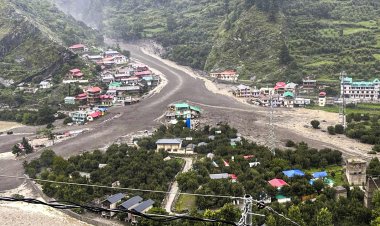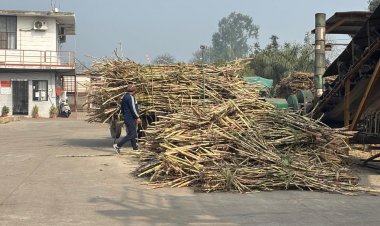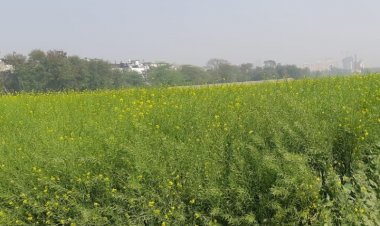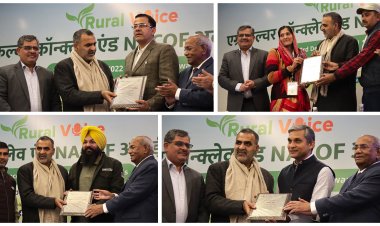Tailoring India’s Agricultural Education for the 21st Century Youth
Educational reforms must now embrace non-formal degree programs around diploma and certificate courses to impart skill oriented vocational training programs for empowering youth to be ‘job creator’ rather than ‘job seeker’. This would demand SAUs to widen their training programs for being more relevant and foresight oriented.
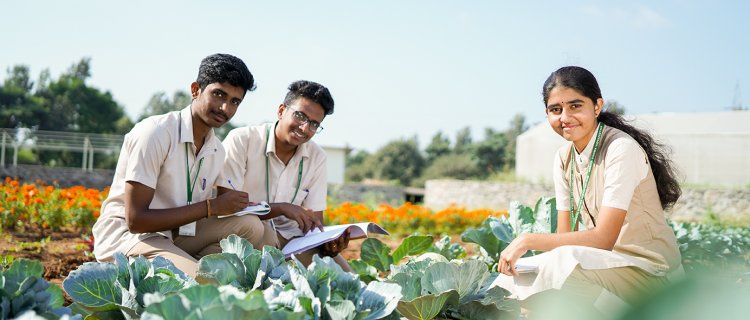
India with 1.41 billion people is the second most populous country in the world after China (1.452) and is projected to surpass China soon and reach an estimated figure of 1.668 billion by 2050, as per the 2022 edition of United Nations’ World Population Prospects. Further, the Ministry of Statistics and Programme Implementation, Government of India (GoI) in its recently released report on ‘Youth in India 2022’ has estimated that youth in the age group of 15-29 years comprised 27.2 per cent of the population in 2021, which is expected to decrease to 22.7 by 2036. Nonetheless, today India has the largest global youth population of 356 million between 10-24 years age group with greater proportion of nearly 200 million young people living in the rural areas. In addition, the overall rate of literacy among India’s youth has increased, with approximately 90 per cent being able to read or write.
Coupled with the prevalence of social media and internet penetration, the youth are largely digitally savvy population, accessing online resources that encourage learning and enhancing skills. Thus, the country has the advantage of a ‘demographic dividend’. When this vast resource of young citizens enters the workforce, it could lead to greater economic growth resulting from a shift in a population’s age structure, mainly when the working-age population is larger than the number of dependents. These young people are driving a culture of innovation, entrepreneurship and diversity and need to have greater inclusion in the agricultural sector, which contributes to nearly 20 per cent of the country’s GDP.
The COVID-19 crisis has amply demonstrated that even under the most severe lockdown of economic activities, agriculture needs to continue producing without fail. Many countries have reported economic recession and efforts to revive their economies to overcome shocks due to the pandemic are underway. Education in general and agricultural education would be the most crucial for this process. It is only with high quality, inclusive and equitable training, countries will succeed in overcoming the pandemic setback, which has impacted millions of children, youth, and adults, especially in the lower income groups. In agrarian countries like India, agriculture is a central activity contributing significantly to the national GDP. In the years to come, the agriculture sector will take another qualitative leap, taking the benefits of digitalization and other technological advancements.
Why Youth are Reluctant to Join Agricultural Sector?
|
Box 1: Challenges in retaining youth in agriculture |
|
- Insufficient access to knowledge, information, and education - Limited access to land - Inadequate access to financial services - Lack of formal and informal on-the-job training - Limited access to markets - Limited involvement in decision-making and policy dialogues |
Over the years, the farming community has been affected adversely due to small land holdings, which comprise over 80 per cent of total farm households. Multiple risks associated with agriculture intensify the challenges owing
to over-exploitation of natural resources linked with rapidly increasing globalization, soaring fuel and food prices, volatile markets and growing climatic volatility. It is estimated that only around five per cent of youth is currently involved in agriculture. This is because they do not find agriculture a creative, profitable and/or a respectable profession. Youth is a great resource, to be used for agricultural development and hence the challenges to retain youth in agriculture (Box 1) are to be effectively addressed. A major dilemma in the developing world is the poor social image of agriculture due to which, rural youth are moving towards the urban sector, looking for alternative and better opportunities. It is evident through successful business models of leading public and private sector organizations, as well as multinational companies (e.g., IT sector), that youth are more innovative and productive as well as receptive to new technologies. On the contrary, in the agriculture sector, there is a wide gap between energy (youth) and experience (older people), which is a cause of backward nature of farming and slow adoption of innovations and new technologies. Due to poor technology dissemination, science is delinked with the society, which makes farming non-remunerative as well as non-resilient. Unless the intellectually satisfying technologies are in place, the youth is not likely to get attracted towards agriculture.
In fact, rural youth (both men and women) need vocational trainings in the potential areas like information communication technology (ICT), high-value agriculture, processing, value-addition, packaging, supply-chain management, storage, etc. This will empower them with knowledge and skills in priority areas like specialty agriculture, high-tech horticulture, protected cultivation, IPM/biocontrol, dairying, fisheries, bee keeping, community nursery, seed production, linking farmers with markets, etc. Well trained and competent youth will certainly embrace agriculture with high degree of confidence. Thus, under the above scenario, agriculture is not seen to be a remunerative and respectable profession, particularly by youth, and is not considered a sustainable pathway to meet food, nutrition, and livelihood security. It is well understood that youth (both men and women) of today have a different mind-set and outlook and like to pursue intellectually satisfying, commercially viable and socially empowering activities.
Unfortunately, in developing countries like India, there exists an ‘aspiration-attainment gap’. Hence, their aspirations must be addressed on priority. Therefore, youth must be motivated through advances in innovation, capacity development, partnership and a participatory approach, through enhanced skills and a positive attitude towards their role in the overall agricultural and rural development of the country. It would require a paradigm shift in the mindset, from traditional agriculture as the means of livelihood to a business-oriented, specialized agriculture involving skilled youth in rural areas. The current agricultural occupation scenario has to be made attractive and remunerative through scaling new innovations and entrepreneurships. Quality/skilled youth can only be attracted and retained in farming if it is associated with improved rural infrastructure and better educational and related facilities. The comprehensive strategies for plausible transformation in future would demand more rewarding jobs in all agro-based and agro-related activities with equal opportunities and facilities in rural and urban areas, better options for public–private sector investments in agriculture and rural-sector infrastructure, and promotion of small agri-firms and producer companies to promote agri-food and value-chain systems. To empower rural youth, including women, here is an urgent need to also transform the extension system into an innovation extension platform that delivers technology-orientated knowledge, inputs, and value-added services. The extension approach would have to focus on farming communities rather than an individual farm household approach, as had been the case in the past. All these are critical for future growth and development of any nation and would, therefore, need an enabling environment through policy and institutional support by all concerned.
Major Concerns of Agricultural Education in India
|
Box 2: Major Concerns of Agricultural Education (AE) in India |
|
AE admission in undergraduate courses is not the first priority of most students, as compared to engineering, medicine, law, accountancy, etc. AE has very low gross enrolment ratio (GER); out of the total eligible population in the country GER for AE is only 0.03% whereas for higher education it is 26%. AE is a state subject, which has caused variations in terms of funding, faculty recruitment and salary, infrastructure, and faculty/student developments programs. The coordination between Centre and States is also insufficient. Inadequate investment and declining financial resources in agricultural universities/colleges Student retention in agriculture is low (only 30% graduates continue in the same sector) Opening of new institutions without matching resources and norms, especially by private sector which are giving degree in agriculture, some of which are lacking quality control and charge very high tuition fees and other dues Disconnect among agricultural education, employment and industries’ requirements Lack of adequate skill, entrepreneurship, and experiential learning; overall poor employability of agricultural graduates Inadequate academic rigour and contextualization of emerging challenges and opportunities Erosion of basic sciences from agricultural courses Widening disconnect between education, research and extension resulting in knowledge deficit Poor system of evaluation, monitoring, impact assessment, accountability, and incentive systems Limited digitalization; and inefficient governance.
|
The National Agricultural Research and Education and Extension System (NAREES) of India is one of the largest agricultural education systems with 4 Deemed-to-be-Universities, 3 Central Agricultural Universities, 3 Central Universities, 63 State Agricultural Universities (SAUs), 93 ICAR Institutions and 731 Krishi Vigyan Kendra (KVKs) under the aegis of Indian Council of Agricultural Research (ICAR). Over the years, it has contributed significantly both for research and technological outputs around agriculture. Besides the concerns in agricultural education shown in Box 2, two other systemic weaknesses in the current system are: (i) the curricula are not integrally linked to development programs, and (ii) there is a disconnect between agri-graduates and farming community, with the former not providing the required services and not integrally linked to development programs, and (ii) there is a disconnect between agri-graduates and farming community, with the former not providing the required services to the later. Also, over the years, knowledge creation has invariably taken a back seat due to over-emphasis on technology transfer and ‘location-specific regional research’ by SAUs. Further, the students tend to aspire executive positions from the beginning of their career, creating a deficit for the skilled operations at the lower levels of farm sector.
Transforming Agri-Education System
Keeping in view the changes in aspirations and lifestyle, there is a need to bring about changes in the agri-education ecosystem, to motivate and attract youth to agriculture and allied fields. Youth can be retained in agriculture only when required knowledge and education, technical skills, sustained encouragement and enabling policy environments are provided. In addition, the required policies, incentives, and rewards need to be put in place to attract young talents to undertake innovative farming that is not only profitable and sustainable but also respectable. This will inspire as well as attract the youth to adopt agriculture as a profession for their happy living. Such an approach should be a strategic priority at the local, state and country level to ensure youth-led inclusive growth in agriculture. Thus, the new strategy should be to reorient present-day agriculture from crop based to farming system based with emphasis on 'plough-to-plate' approach, which is more relevant, efficient, demand-driven, productive, competitive, and profitable. It must also ensure food, nutrition and environmental security for all.
The ICAR, in collaboration with all relevant stakeholders in the recent past, has undertaken some important reforms in AE in India. Quality assurance in higher agricultural education has been introduced through accreditation system, framing of minimum standards for higher education, academic regulations, personnel policies, review of course curricula and delivery systems, support for creating/strengthening infrastructure and facilities, improvement of faculty competence and admission of students through All India Examination. The ICAR’s Fifth Deans’ Committee Report restructured the course curricula to underpin relevant practical skills, entrepreneurial aptitude, self-employment, leadership qualities and confidence among graduates and attracting and retaining youth in agriculture. It also suggested norms for establishing new colleges. In order to harness regional specialties and to meet region-specific needs, certain optional courses such as coastal agriculture, hill agriculture, tribal agriculture etc. were formulated. New degree programs and courses were recommended in emerging fields like genomics (biotechnology), nanotechnology, GIS, precision farming, conservation agriculture, secondary agriculture, hi-tech cultivation, specialty agriculture, renewable energy, artificial intelligence, big data analytics, mechatronics, plastics in agriculture, dryland horticulture, agro-meteorology and climate change, waste disposal and pollution abatement, food plant regulations and licensing, food quality, safety standards and certification, food storage engineering, food plant sanitation and environmental control, emerging food processing technologies, sericulture, community science and food nutrition and dietetics. In compliance with the Student READY programme launched in 2015, the Committee has designed one year programme in all the UG disciplines comprising (i) Experiential Learning, including International Experiential Learning wherever feasible; (ii) Rural Agriculture Work Experience; (iii) In-plant Training/ Industrial Attachment; (iv) Hands-on Training (HoT) / Skill Development Training; (v) Students Projects; and (vi) the Agricultural Science Pursuit for Inspired Research Excellence (ASPIRE) programs. The ongoing World Bank supported National Agricultural Higher Education Project (NAHEP), built on the preceding World Bank projects, particularly NATP and NAIP, is strengthening capacities of faculty and students, foster linkages of the national system with global knowledge economy, facilitating international experiential learning, promoting learning-centred education and fortifying agriculture with private industries.
Notwithstanding the above initiatives, there is still good scope for further improvement in the AE ecosystem for motivating and attracting youth (MAYA) in agriculture through greater attention on technical and policy aspects as follows:
Technical Aspects
As articulated in the NEP 2020, agricultural education must maintain such standards to ensure that agricultural graduates from India are professionally well equipped to handle national as well as international challenges.
The NAREES should assess the manpower needs of the fast transforming, knowledge-intensive agriculture to make necessary adjustments in curricula and skill development, emphasizing on experiential learning and exposure to national and international issues.
More technological interventions are likely in the disciplines of ICT, digitalization, biotechnology, nanotechnology, agro-processing, precision agriculture and systems simulation, hence the associated manpower demand and shift in the pedagogy be accordingly included.
Pluralistic approach and public-private partnership focusing on business/marketing/income orientation are needed for making the local extension sensitive to the challenges at micro level, strengthening the feedback mechanism and setting the right priorities.
Promoting entrepreneurship and agri-startups, encouraging market-led extension strategies and intensive use of electronic media should be duly covered in the educational programs.
Policy Aspects
The Ministry may consider setting-up an ‘Agricultural Education Council of India (AECI)’ as a regulatory authority which should work on similar lines as that of the Veterinary Council of India (VCI).
Since higher education is on the concurrent list, agricultural education must be brought into the concurrent list in order to bring uniformity in proposed reforms.
World class institutes should be set- up along the lines of IITs and IIMs with needed autonomy for decision making.
The focus should be shifted to instil employable skills in agriculture graduates who are expected by employers in today’s competitive business scenario; invest on non-formal education and vocational training in agricultural technologies
*. Educational reforms must now embrace non-formal degree programs around diploma and certificate courses to impart skill oriented vocational training programs for empowering youth to be ‘job creator’ rather than ‘job seeker’. This would demand SAUs to widen their training programs for being more relevant and foresight oriented.
Conclusion
Agricultural education sector, as in other subjects, requires a trained human capital with youth which (i) possess social consciousness and are connected and committed to rural communities; (ii) have strong entrepreneurial skills and spirit, and are capable of initiating new job opportunities; (ii) are guided by positive values and high ethical standards; (iv) are committed to a new vision towards sustainable agricultural production, (v) have a solid grounding in the scientific and technical principles that underlie the practical experience so critical for building confidence; (vi) undertake generalist preparation that will enable them to develop holistic solutions to the problems that they will encounter in their careers (vii) are innovators with the confidence to be creative and address real problems (viii) possess strong leadership, interpersonal and team building skills and demonstrate strong communication skills, including effective use of international business languages and information technology, (ix) have ‘business skills’ to generate employment and wealth and able to work particularly with rural communities. This needs a paradigm shift in our approach and policy focused on youth to transform them from ‘job seekers to job creators’. Capacity development of youth through informal and vocational training and creating awareness of new opportunities in agriculture, including secondary and specialty agriculture, would attract youth in agriculture, help bridge the gap between rural and urban and boost rural economy for contributing towards faster national economic growth. Finally, motivating youth through enabling environment, institutional support and required hand holding will not only attract routh to agriculture but would ensure accelerated growth of agriculture sector to contribute at least one trillion out of targeted five trillion economy envisioned by our Prime Minister.
(Writer is Former Secretary, DARE & Director General, ICAR and Chairman, Trust for Advancement of Agricultural Sciences (TAAS), New Delhi)



 Join the RuralVoice whatsapp group
Join the RuralVoice whatsapp group

















